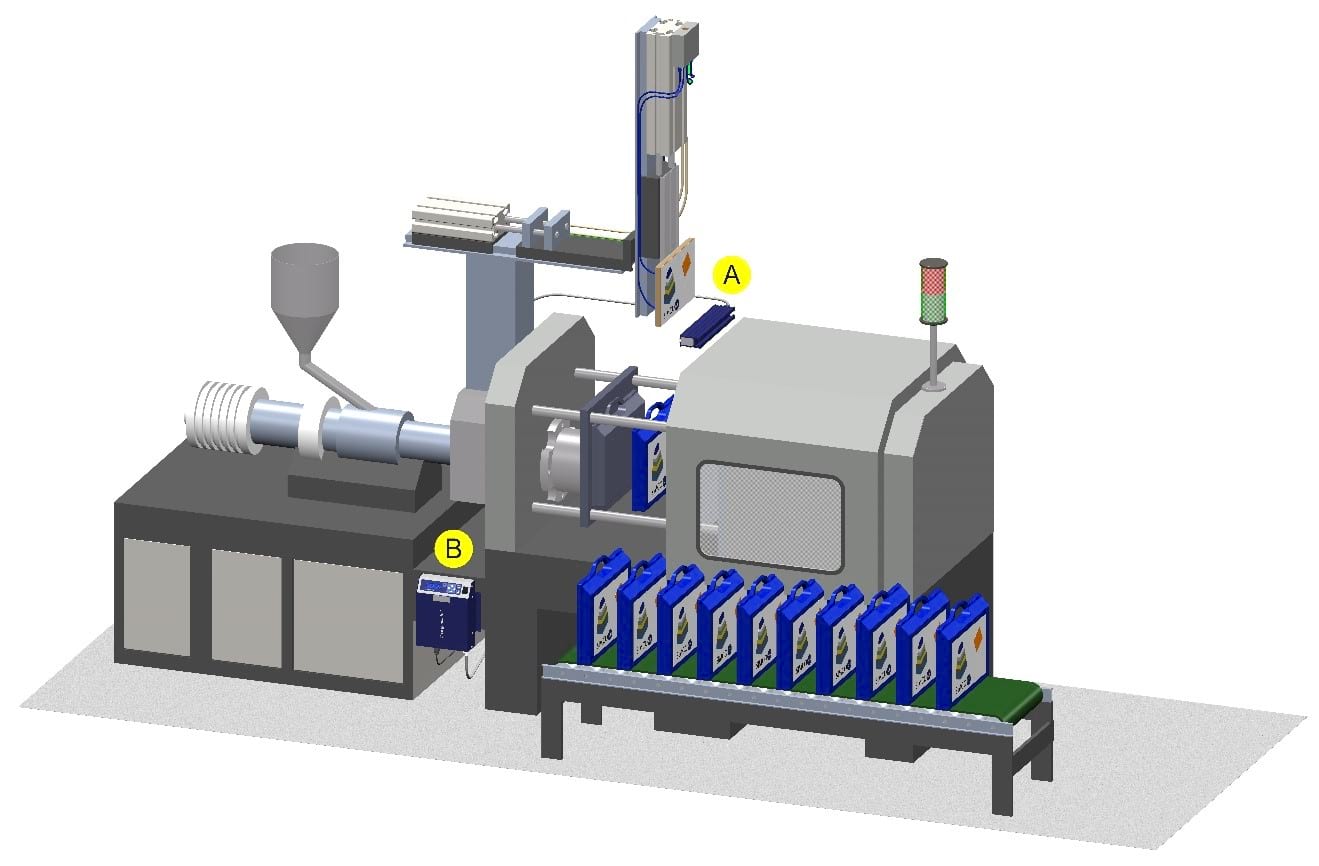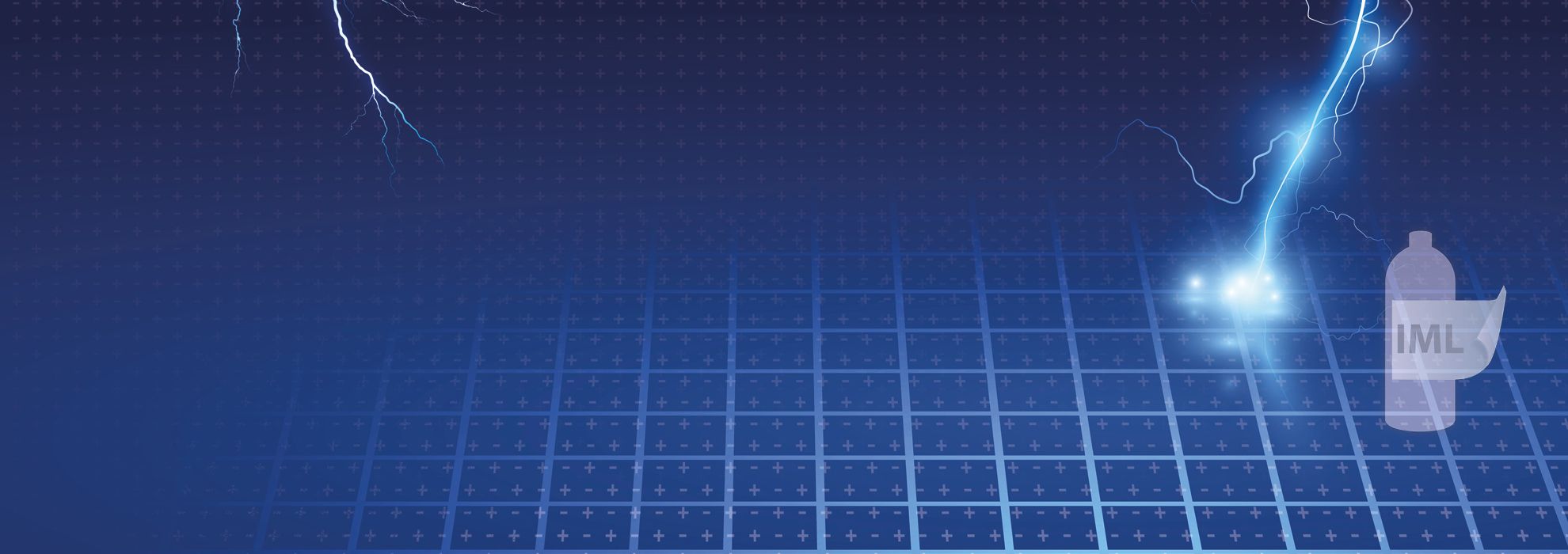IML In Mould Labelling process
In Mould Labelling or with the help of static electricity, static placement(static gluing) is the standard in the injection moulding IML industry, thermoforming IML and also the blow moulding IML industry. Instead of conventional methods like decorating end products by printing directly or placing an adhesive label onto the product, the decoration is achieved with a pre-printed plastic polypropylene (PP) label. The pre printed PP label is inserted in the mold and then the molten PP is added to the mould. The label then fuses and the product takes the shape of the mould.

Benefits from using (static) IML label application
- eliminates screen printing, label application or pad printing on product
- no corona or flame treaters needed to prepare the surface
- higher quality graphics
- rapid changing of graphics possible
- recyclable with label material same as moulded product
- hygienic much better result for the content
- less storage space, press to final packaging
- single step production method for cups and buckets
- less handling, less costs, less storage etc.
The in mold labeling(IML) process
How does IML work? In the injection moulding process a pre-printed IML-label is picked up and placed in the mould cavity where it sticks, exactly on the wished position, due to the electrostatic charging. After closing the mould cavities the label will be moulded together with the end-product and comes out as a finished, fully recyclable product. To realise a high reliable, competitive IML-project the choice of an IML-suitable label is of decisive significance. Whether you are an end-user or a robotics manufacturer, Simco can assist you with advice and knowledge in creating the perfect IML solution. Big advantage of the Electrostatic In Mould Labelling IML-process is that the moulds are much easier to build so cheaper to produce compared to the old vacuum technique. Since no vacuum channels through the mold is needed the production process is not interrupted by cleaning these contaminated channels, resulting in high-output, competitive IML production process.
IML Static - Charging Technology for label placement
There are three different Charging Methods for In Mold labelling(click to find out more):
- Electrostatic Pinning: Charging the label inside the mould by High Voltage Generators
- High speed Direct IML Charging: Charging the label inside the mould by a semi-conductive material(Patented by Simco)
- Simplified IML for metallic labels: Charging the label outside the mould and transfer charged label inside the mould
Typical IML Application

Schematic overvieuw of IML application, label placement by means of static electricity
IML, In Mould Labelling, è indispensabile nella produzione di prodotti con pressa ad iniezione.
Un perfetto esempio è l’imballaggio dei prodotti alimentari ed altri prodotti plastici per uso domestico Molti prodotti sono fatti con l’ausilio delle cariche statiche. Invece di stampare direttamente o di posizionare un’etichetta adesiva sul prodotto, la stampa viene raggiunta con un’etichetta plastica prestampata. L’etichetta prestampata viene posizionata nello stampo e tenuto fermo da una carica statica. In questo modo l’etichetta verrà fusa insieme al prodotto e verrà fuori come prodotto finito.
Come funziona L’IML?
IML è una parte del processo di stampa a iniezione. L’etichetta viene presa da un robot e messa in una cavità dello stampo dove questa si attacca grazie alla carica elettrostatica. Dopo la chiusura della cavità dello stampo, il prodotto viene iniettato e l’etichetta viene fusa nel prodotto finale.
Cosa è necessario per l’IML?
- Un’etichetta stampata adatta
- Un mandrino con elettrodi IML
- Un generatore di carica
- Un robot manipolatore
Elettrodi IML
A seconda della geometria del prodotto e del ciclo di tempo desiderato, ci sono vari metodi associati a diversi elettrodi da applicare.
Costruzione
- Elettrodi nel mandrino, ad esempio IML Spider
- Mandrino costruito con schiuma IML
- Mandrino costruito con Easycore IML
- Mandrino costruito con schiuma IML semplificato con elettrodo di carica esterno
- Mandrino costruito con Easycore IML semplificato con elettrodo di carica esterno
Come Simco-Ion vi può aiutare?
Simco-Ion vanta molti anni di esperienza con il processo IML e quindi ha sviluppato generatori di carica speciali, elettrodi IML e materiale per elettrodi IML e tecniche di carica.
Una ampia gamma di prodotti innovativi vi aiuterà ad ottimizzare il processo IML.
Simco-Ion o l’agente della Vostra zona vi aiuteranno con i consigli e la competenza per realizzare il vostro progetto.
Per ulteriori informazioni, visitate: www.simco-ion.it/contact

